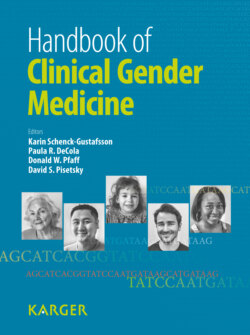Читать книгу Handbook of Clinical Gender Medicine - Группа авторов - Страница 54
The Fetus Affects Its Environment - Lessons Learned from Unlike Twin Pairs
ОглавлениеMelamed et al. [28] retrospectively assessed 2,704 dichorionic twin pregnancies including 16.1% female-female (FF) pairs, 14.4% male-male (MM) pairs, and 69.5% female-male pairs (FM). The risk of preterm delivery was highest in the MM group, intermediate in the FM group, and lowest in the FF group. Female neonates from FM pregnancies had a rate of respiratory and neurologic morbidity similar to that of male infants and significantly higher than that of female neonates from FF pregnancies. In essence, we showed that it is better for a twin (male or female) to share the womb with a female rather than with a male co-twin. The effect of the male twin on his female co-twin has been attributed to transamniotic passage of fetal testosterone from the male twin to his sister in utero. In humans, this hypothesis has not yet been proven unequivocally.
